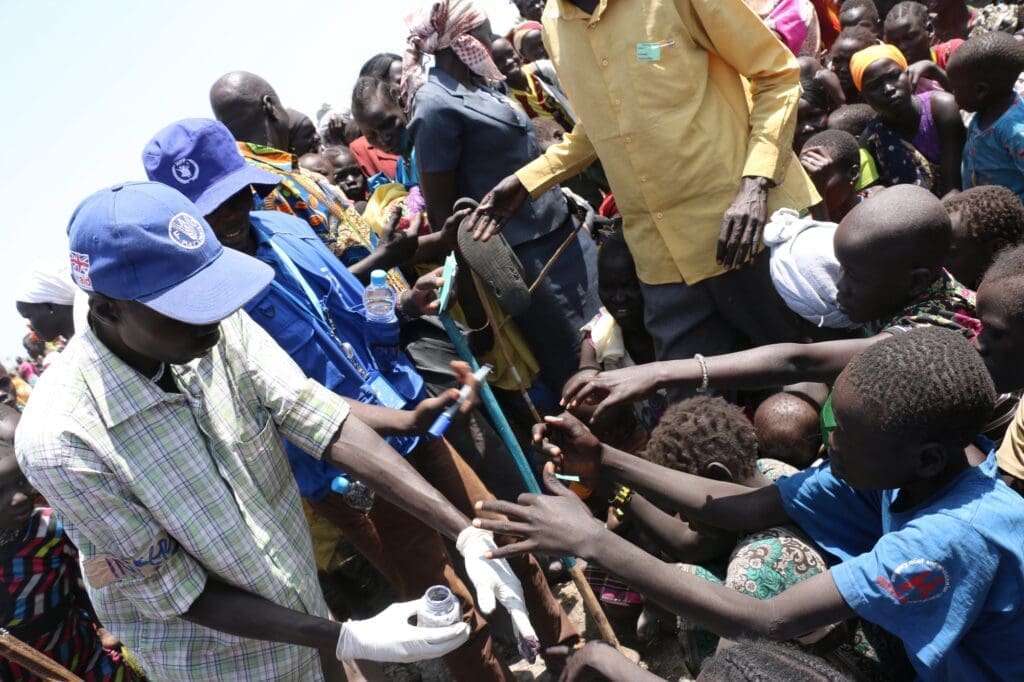WFP’s Rapid Response, Explained

Early last year, aid workers in South Sudan reached a significant milestone. One million people — 20 percent of whom were children under age 5 — had received lifesaving assistance from the World Food Programme (WFP), UNICEF and other partners through 82 rapid response missions.
So what exactly is a rapid response mission?
WFP and UNICEF designed the simple yet innovative Integrated Rapid Response Mechanism (RRM) in 2014 to deliver urgently needed supplies to families in hard-to-reach areas by air and river. This is especially crucial in places where violence and insecurity make access to those in need a constant challenge.
Here’s how it works:
- Teams of technical specialists fly into remote areas by helicopter and set up a temporary camp, where they can remain for up to two weeks.
- They make logistical arrangements — like conducting head counts, registering the people who need supplies and hiring locals to serve as porters to help carry and distribute food.
- The teams then radio back to head offices to relay the information and determine the amount of food and supplies needed.
- They coordinate with transport teams to get the right amount of food delivered.
In the long term, RRM teams work to establish or reopen humanitarian access to remote communities.
“The rapid response missions have been standing between people and starvation in several parts of the country,” says Joyce Luma, the WFP representative and country director in South Sudan. “This is a lifeline that must be maintained where access remains a challenge.”
Right now, RRM teams are active in Iraq, northeast Nigeria and South Sudan.
Iraq’s RRM Consortium — led by WFP and UNICEF with support from 12 partners and the Iraqi government’s Joint Coordination and Monitoring Centre — activates within 72 hours of verifying the location of displaced people, providing lightweight kits of food, water, hygiene supplies and special items for women and babies.
RRM teams in Nigeria use helicopters and pool logistics and telecommunications resources from the entire humanitarian community.
“We are the first responders in those areas. It’s not going to be a camping trip,” says RRM coordinator Philippe Martou during a mission to Nigeria. “There are no places to stay overnight where we go into the deep field, so we have tents, sleeping bags and we sleep in the middle of the field.”
In South Sudan, where most roads are impassable during the rainy season, RRM teams work with drop zone coordinators who clear spaces for airdrops of supplies from WFP, UNICEF, the Food and Agriculture Organization, the World Health Organization and MedAir.




